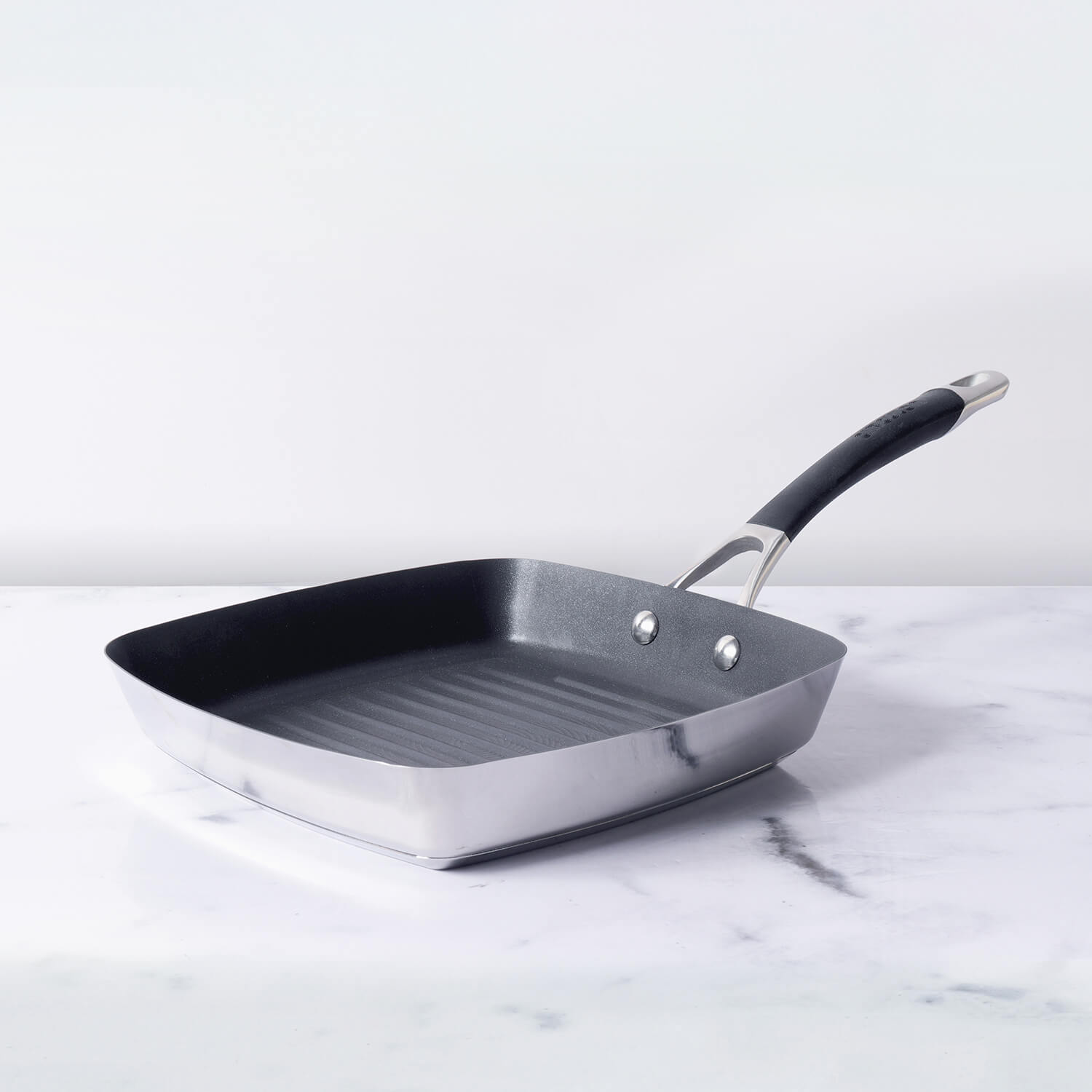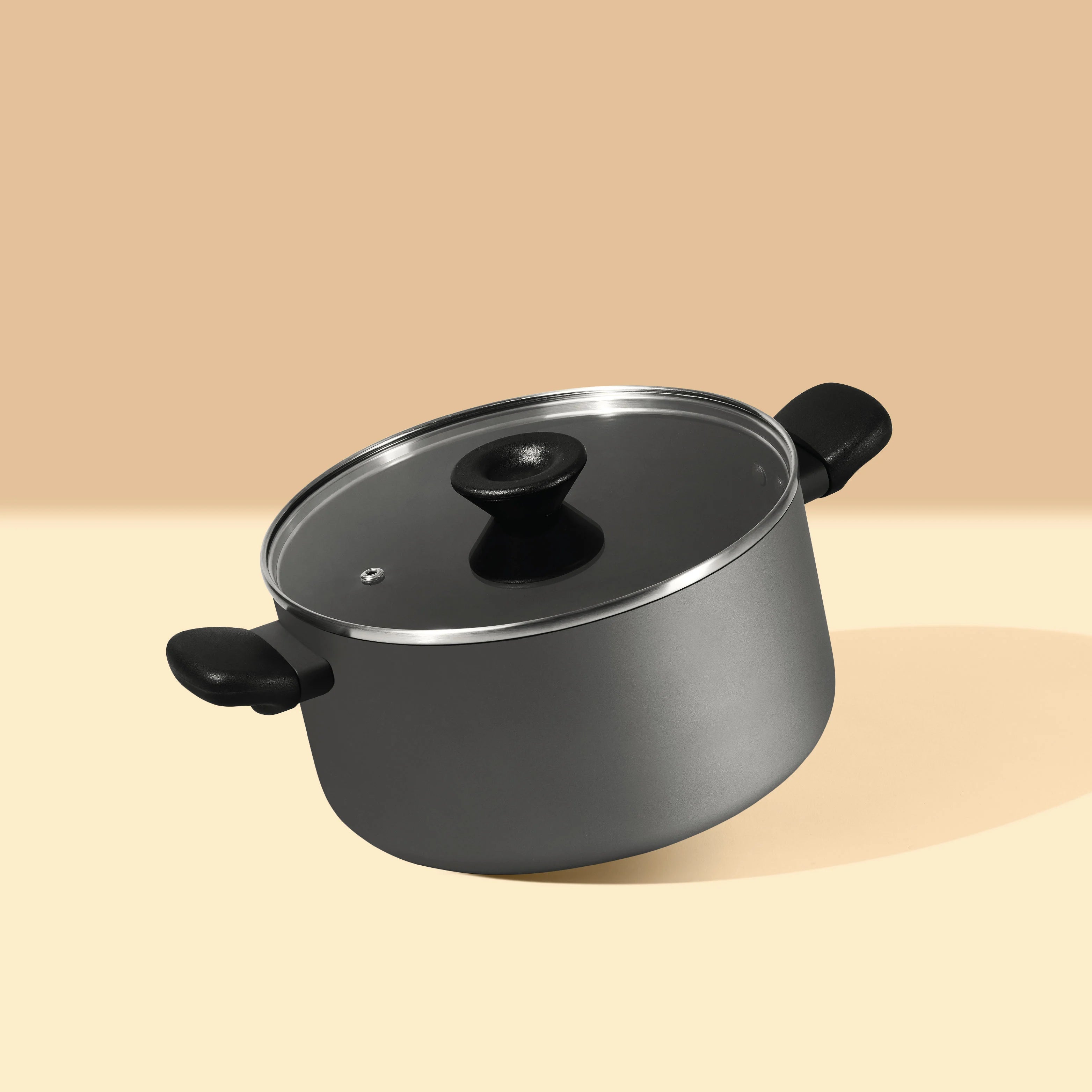Utilizing nonstick cookware for low-fat cooking techniques offers numerous benefits for health-conscious individuals seeking to reduce their fat intake without sacrificing flavor or texture in their meals. The slick surface of nonstick cookware minimizes the need for added fats and oils, facilitating healthier cooking methods such as sautéing, stir-frying, and dry-searing with minimal oil. This feature promotes lower fat consumption while ensuring that food cooks evenly and without sticking, resulting in flavorful and satisfying dishes. Additionally, nonstick cookware is versatile and can be used for a variety of low-fat cooking techniques, including grilling, baking, and roasting, further expanding its utility in the kitchen. By incorporating nonstick cookware into their culinary repertoire, individuals can enjoy nutritious and delicious meals with reduced fat content, contributing to their overall health and well-being.
Table of Contents
What Is Low-Fat Cooking Technique?
Low-fat cooking techniques involve preparing meals with minimal added fats or oils, focusing on healthier cooking methods that reduce overall fat content without sacrificing flavor or texture. Here are some common low-fat cooking techniques:
- Grilling: Grilling involves cooking food over direct heat, typically on a grill or grill pan. It allows excess fat to drip away from the food as it cooks, resulting in lower fat content. Lean proteins like chicken breast, fish fillets, and vegetables are excellent options for grilling.
- Steaming: Steaming involves cooking food by exposing it to steam from boiling water. It's a gentle cooking method that helps retain the natural flavors, colors, and nutrients of ingredients without the need for added fats. Steamed vegetables, dumplings, and seafood are popular choices for this technique.
- Baking and Roasting: Baking and roasting involve cooking food in an oven using dry heat. These methods are ideal for proteins like chicken, turkey, and fish, as well as vegetables. By using a minimal amount of oil or cooking spray, you can achieve crispy and flavorful results without excess fat.
- Broiling: Broiling is similar to grilling but uses heat from above rather than below. It's a quick and convenient cooking method that allows excess fat to drain away from the food as it cooks. Lean cuts of meat and vegetables can be broiled for a delicious and low-fat meal.
- Sautéing with Minimal Oil: Sautéing involves cooking food quickly in a small amount of oil or cooking spray over medium to high heat. By using a nonstick pan and limiting the amount of oil, you can achieve flavorful results without excessive fat. This technique is suitable for a wide range of ingredients, including vegetables, lean proteins, and tofu.
- Poaching: Poaching involves gently simmering food in a flavorful liquid, such as broth or wine. It's a low-fat cooking method that helps keep proteins moist and tender without adding extra calories. Poached chicken, fish, and eggs are popular choices for this technique.
- Stir-Frying: Stir-frying involves cooking food quickly in a small amount of oil over high heat. By using a nonstick pan and limiting the amount of oil, you can create flavorful stir-fries with minimal fat. Lean proteins, vegetables, and tofu are commonly used in stir-fry dishes.
What Does Low Fat Cooking Technique Reduce?
Low-fat cooking techniques aim to minimize or eliminate the use of added fats and oils in meal preparation. By reducing fat content, these techniques offer several benefits for health and weight management. Here's what low-fat cooking techniques typically eliminate or minimize:
- Excess Calories: Fats are more calorie-dense than carbohydrates and proteins, containing nine calories per gram compared to four calories per gram for carbohydrates and proteins. By cutting back on added fats and oils, low-fat cooking techniques help reduce overall calorie intake, which can support weight loss or weight management goals.
- Unhealthy Fats: Some cooking fats, such as saturated and trans fats, have been linked to an increased risk of heart disease, stroke, and other health conditions. Low-fat cooking techniques minimize the use of these unhealthy fats, promoting heart health and reducing the risk of chronic diseases.
- Cholesterol: Animal fats and certain vegetable oils contain cholesterol, which can contribute to elevated blood cholesterol levels when consumed in excess. Low-fat cooking techniques help limit cholesterol intake by reducing the use of high-fat ingredients and cooking methods that require large amounts of added fats.
- Risk of Obesity: Excessive fat consumption is a significant contributor to obesity, a condition associated with numerous health risks, including type 2 diabetes, high blood pressure, and certain cancers. Low-fat cooking techniques help individuals maintain a healthy weight by reducing fat intake and promoting the consumption of nutrient-dense foods.
- Digestive Discomfort: High-fat foods can be harder to digest and may contribute to digestive issues such as bloating, gas, and indigestion. By emphasizing lighter, lower-fat ingredients and cooking methods, low-fat cooking techniques can help support digestive health and reduce discomfort.
Benefits Of Low-Fat Cooking Techniques:
Low-fat cooking techniques offer numerous benefits for both your health and your overall well-being. Here are some of the key advantages:
- Weight Management: Low-fat cooking techniques can aid in weight management by reducing overall calorie intake. Fats are more calorie-dense than carbohydrates and proteins, so by cutting back on fat consumption, you can create a calorie deficit that promotes weight loss or helps maintain a healthy weight.
- Heart Health: High intake of saturated and trans fats has been linked to an increased risk of heart disease. Low-fat cooking techniques, which minimize the use of these unhealthy fats, can help lower cholesterol levels and reduce the risk of heart disease and stroke.
- Improved Blood Sugar Control: Low-fat cooking methods can be beneficial for individuals with diabetes or those at risk of developing diabetes. By reducing fat intake, particularly saturated fats, you can improve insulin sensitivity and better control blood sugar levels.
- Lower Risk of Chronic Diseases: Diets high in unhealthy fats have been associated with an increased risk of chronic diseases such as type 2 diabetes, certain cancers, and Alzheimer's disease. Low-fat cooking techniques promote the consumption of nutrient-rich foods like fruits, vegetables, whole grains, and lean proteins, which can help lower the risk of these diseases.
- Digestive Health: High-fat foods can be harder to digest and may contribute to digestive issues such as bloating, gas, and indigestion. Low-fat cooking methods emphasize lighter, easier-to-digest foods, which can support digestive health and reduce discomfort.
- Enhanced Nutrient Absorption: Some vitamins and nutrients, such as vitamins A, D, E, and K, are fat-soluble, meaning they need to be consumed with fat to be absorbed properly. While it's important to include some healthy fats in your diet for this reason, low-fat cooking techniques still allow for sufficient fat intake to support nutrient absorption without overdoing it.
- Improved Overall Diet Quality: By focusing on low-fat cooking techniques, you're likely to consume more nutrient-dense foods like fruits, vegetables, whole grains, and lean proteins. This can lead to an overall improvement in your diet quality, providing essential vitamins, minerals, fiber, and antioxidants that support optimal health and well-being.
What Makes Non-Stick Cookware Perfect For Low Fat Cooking Techniques?
Non-stick cookware is highly suitable for low-fat cooking techniques due to its ability to minimize the need for added fats and oils while still achieving flavorful and satisfying results. The slick surface of non-stick cookware reduces the risk of food sticking, allowing for sautéing, stir-frying, and dry-searing with minimal oil. This feature promotes lower fat intake in meals while preserving the natural flavors and textures of ingredients. Additionally, non-stick cookware's versatility extends to other low-fat cooking methods such as grilling, baking, and roasting, making it a valuable tool for creating nutritious and delicious meals with reduced fat content. While non-stick cookware isn't a panacea for all low-fat cooking needs, its ease of use, quick cleanup, and adaptability make it an excellent choice for individuals seeking to incorporate healthier cooking practices into their culinary repertoire.
Best Non-Stick Cookware For Low Fat Cooking Techniques:
Meyer non-stick cookware is indeed well-suited for low-fat cooking techniques, offering a range of features that support healthy cooking practices. With Meyer's non-stick cookware, individuals can enjoy cooking with minimal oil or fats, thanks to its durable non-stick coating that prevents food from sticking without the need for excessive greasing. This promotes lower fat intake in meals while preserving the natural flavors and textures of ingredients. Whether it's sautéing, stir-frying, or dry-searing, Meyer non-stick cookware ensures even heat distribution and easy release, facilitating flavorful and satisfying results with minimal fat content. Additionally, Meyer's cookware is versatile enough to accommodate various low-fat cooking methods such as grilling, baking, and roasting, providing home cooks with the tools they need to create nutritious and delicious meals without excess fat. With its reliability, durability, and user-friendly design, Meyer non-stick cookware is an excellent choice for individuals looking to embrace healthier cooking practices and achieve their culinary goals.











Leave a comment